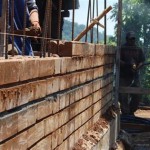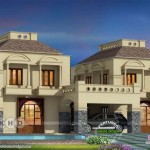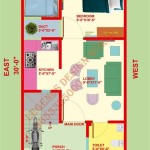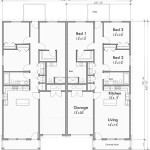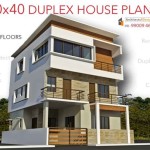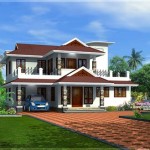Pole Barn House Plans: Understanding the Cost Factors
Pole barn houses are gaining popularity as a cost-effective and customizable alternative to traditional stick-built homes. The construction process, which leverages deeply set posts as the primary structural element, offers potential savings in labor and materials. However, the overall cost of pole barn house plans can vary significantly depending on a multitude of factors. This article aims to provide a comprehensive overview of the cost considerations associated with pole barn house plans, helping prospective homeowners make informed decisions.
The initial step in determining the cost is understanding the different phases of the project. These phases typically include design and planning, materials acquisition, construction labor, interior finishing, and site preparation. Each phase contributes a proportion to the total cost, and careful budgeting for each is crucial.
Key Point 1: Design and Planning Costs
The design and planning phase sets the foundation for the entire project. This involves not only the architectural design of the house but also securing necessary permits and ensuring compliance with local building codes. Costs incurred during this phase can include:
Architect Fees: If employing an architect or a design firm, fees can range from a percentage of the overall construction cost (typically 5% to 15%) to an hourly rate. The complexity of the design and the level of customization will directly impact these fees. Simple, pre-designed pole barn house plans can significantly reduce this expense compared to fully custom designs.
Engineering Fees: Pole barn structures, especially those designed for residential use, often require structural engineering to ensure stability and safety, particularly in areas prone to high winds, heavy snow loads, or seismic activity. Engineering fees will cover the cost of structural calculations, foundation design, and ensuring the building meets all relevant safety standards.
Permitting Fees: Obtaining building permits is a mandatory step. The fees associated with permitting vary widely based on location, the size of the structure, and the complexity of the project. It is prudent to research local building codes and permit requirements early in the planning process to avoid unexpected costs.
Site Surveys and Soil Testing: A site survey accurately maps the property's boundaries, topography, and existing utilities. Soil testing is essential to determine the ground's load-bearing capacity and suitability for pole barn construction. These surveys and tests inform the foundation design and ensure the longevity of the structure. Costs can vary depending on the size and complexity of the site.
Investing adequately in the design and planning phase is essential. A well-thought-out plan can prevent costly mistakes during construction and ensure the finished structure meets all functional and aesthetic requirements.
Key Point 2: Material Costs
Material costs represent a significant portion of the overall budget for a pole barn house. Understanding the various components and their associated expenses is essential for effective cost management. Key considerations include:
Posts and Framing: The cost of posts, typically made of treated lumber or steel, depends on the size of the structure, the spacing of the posts, and the type of material used. Lumber prices can fluctuate significantly, impacting the overall cost. Similarly, the cost of framing materials (e.g., lumber for girts and purlins) will vary based on the species and grade of the wood.
Roofing: Roofing materials are a major expense. Options include metal roofing, asphalt shingles, and other specialized materials. Metal roofing, a common choice for pole barns, offers durability and longevity but comes at a higher initial cost than asphalt shingles. The choice of roofing material will impact not only the upfront cost but also the long-term maintenance expenses.
Siding: Siding options for pole barn houses range from metal siding to wood siding, vinyl siding, and even more traditional materials like brick or stone veneer. Metal siding is a popular choice due to its durability and affordability, but other options may be preferred for aesthetic reasons. The cost of siding will vary based on the material selected and the size of the building.
Concrete: Concrete is typically used for the foundation and potentially for floors. The volume of concrete required will depend on the size of the building and the thickness of the slab. Concrete prices can vary based on local market conditions and the distance from the supplier.
Insulation: Insulation is crucial for energy efficiency and comfort. Options include fiberglass batts, spray foam insulation, and rigid foam boards. Spray foam insulation provides superior insulation but is generally more expensive than fiberglass batts. The choice of insulation will impact the building's energy performance and its heating and cooling costs. The R-value (resistance to heat flow) should align with local climate requirements.
Windows and Doors: The number, size, and quality of windows and doors will influence the cost. Energy-efficient windows and doors can reduce energy consumption but may have a higher upfront cost. The choice of materials (e.g., vinyl, wood, fiberglass) will also affect the price.
Interior Finishing Materials: Interior finishing materials include drywall, flooring, cabinetry, countertops, and fixtures. The cost of these materials can vary widely based on personal preferences and the desired level of finish. Budget-conscious choices in this area can significantly reduce the overall cost of the project.
Careful material selection and procurement strategies are vital for managing costs. Obtaining multiple quotes from different suppliers and considering bulk discounts can help to reduce material expenses. Planning well in advance can also mitigate the impact of price fluctuations.
Key Point 3: Construction Labor Costs
Labor costs represent a significant portion of the overall project budget. The complexity of the design, the size of the structure, and the availability of skilled labor will influence these costs. Considerations include:
General Contractor Fees: Employing a general contractor to manage the project can add to the overall cost but can also provide valuable expertise and ensure the project is completed on time and within budget. General contractor fees typically range from 10% to 20% of the total construction cost. The specific services provided by the general contractor should be clearly defined in the contract.
Framing Labor: The cost of framing labor will depend on the complexity of the design and the experience of the framing crew. Experienced framers can complete the work more quickly and efficiently, reducing labor costs.
Roofing and Siding Installation: The installation of roofing and siding requires specialized skills. Hiring experienced installers is crucial to ensure a weathertight and durable building envelope. The cost of installation will vary depending on the material chosen and the complexity of the installation.
Concrete Work: Pouring and finishing concrete requires skill and experience. Hiring a qualified concrete contractor is essential to ensure a level and durable foundation. The cost of concrete work will depend on the volume of concrete required and the complexity of the job.
Electrical, Plumbing, and HVAC: These trades require licensed professionals. Obtaining multiple quotes from different contractors is essential to ensure competitive pricing. The complexity of the systems and the scope of the work will influence the cost.
Interior Finishing Labor: Interior finishing work, such as drywall installation, painting, flooring installation, and cabinetry installation, can be a significant expense. DIY options can reduce these costs, but they require significant time and skill. It is important to factor in the potential for mistakes and delays when considering DIY options.
Managing labor costs effectively requires careful planning and coordination. Obtaining multiple bids from qualified contractors, clearly defining the scope of work in each contract, and monitoring progress regularly can help to control costs and ensure the project stays on track.
Beyond these core aspects, several other factors can influence the overall cost of pole barn house plans. These include site preparation costs (e.g., clearing trees, leveling the ground), utility hookups (e.g., water, sewer, electricity), landscaping, and contingency funds to cover unexpected expenses. A comprehensive budget should account for all of these potential costs to avoid unpleasant surprises during the construction process.
Ultimately, the cost of pole barn house plans is a function of design complexity, material choices, labor rates, and local market conditions. Thorough planning, careful budgeting, and informed decision-making are essential for achieving a cost-effective and successful pole barn house project.

Pole Barn Homes The New Way To Build A Home Kits

What Are Pole Barn Homes How Can I Build One

Pole Barn Homes The New Way To Build A Home Kits

Cost To Build Pole Barn House Estimate

Building A Pole Barn House 6 Big Things To Consider

How Much Does A Pole Barn House Cost 2024 S

What Are Pole Barn Homes How Can I Build One

Residential Pole Buildings Post Frame Barn Homes Lester

How Much Does A 40x60 Pole Barn Cost 2024 S

40x60 Barndominium Floor Plans With And Pictures


